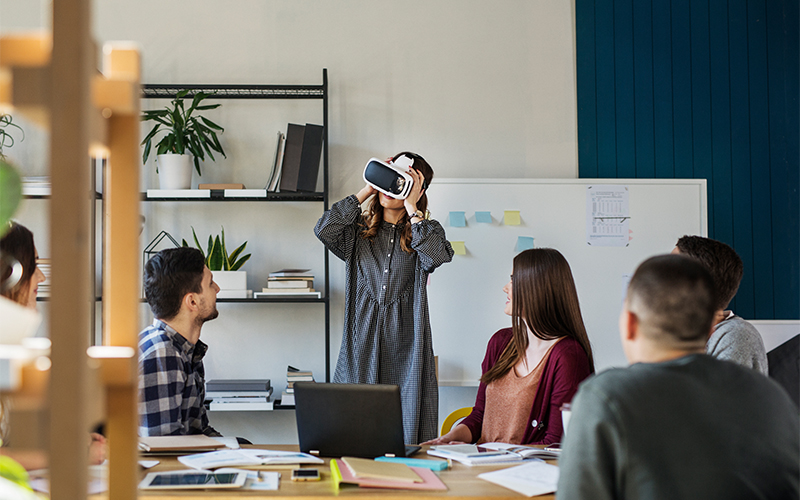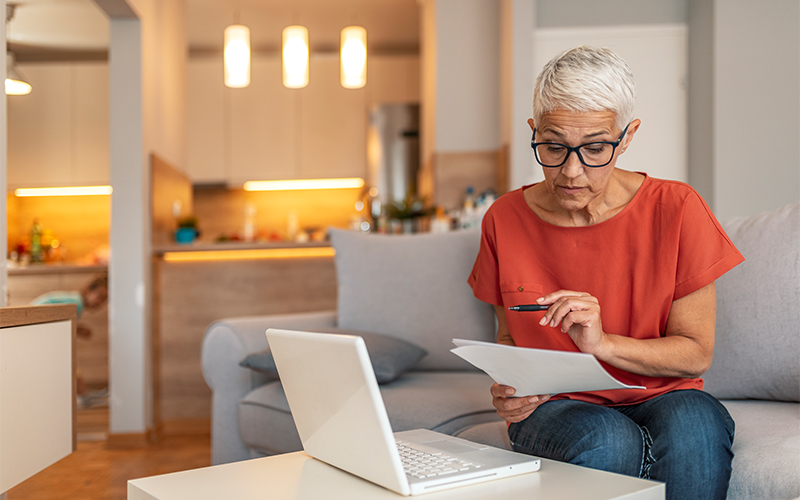Education Technology Services
How virtual classrooms are transforming learning?
When you think about a classroom, the first image that pops in your mind is a teacher standing in front of a chalkboard, addressing a room full of students occupying rows upon rows of desks. The majority of educational institutions employ this traditional design of a classroom. But over the past two years, with the COVID-19 pandemic, educational institutions had no choice but to switch to online learning. But this forced development has proven that virtual classrooms are efficient and can open up astounding opportunities in the education ecosystem.*
What is a virtual classroom?
A virtual classroom is an online school environment facilitated by a digital learning platform where teachers and students can interact with each other from the comfort of their homes. Regardless of where the teachers and students are, a virtual classroom allows them to connect and learn without having to physically travel to the school. This way, cost-effective quality education can reach students around the globe conveniently. A typical virtual classroom has the following features:
- Online whiteboard:
- Videoconferencing:
- Screen sharing:
- Breakout rooms:
- Media players:
- Text chat:
- Video recording:
- Participation controls:
- End-to-end encryption:
Like the whiteboard in a physical classroom, an online whiteboard allows teachers to write, draw, or highlight content for students to see and learn.
The videoconferencing feature lets teachers and students interact in real time, creating an engaging learning experience and allowing students to develop social interaction skills by reading social cues and body language like they would in a brick-and-mortar school.
With the screen-sharing feature, teachers can share learning resources, live demonstrations, and specific visuals to make learning material more interesting and easier to understand. On the other hand, students can also use this feature to participate in class activities or highlight their doubts during discussions.
With breakout rooms, teachers can either interact with the whole class or create smaller groups for group activities and student collaborations.
Media players can make learning more engaging by incorporating videos, animations, or demonstrations in the teaching material.
Text chat or instant messaging is a great feature to promote discussion without disrupting the class. Teachers can give instructions; students can clear their doubts and provide feedback easily with this feature. This is also a great feature for students who are not comfortable with speaking up in front of a class.
Students can revisit sessions and clear their doubts with the video recording feature.
In virtual classrooms, students can mute their surroundings or virtually ‘raise’ their hand to actively participate in the class discussions.
This feature restricts the virtual classroom access to authorised learners and protects the privacy of all involved.
How have virtual classrooms revolutionised learning?
Virtual classrooms offer many benefits over traditional physical classrooms and have changed the learning environment.
- Virtual classrooms have incorporated flexibility and accessibility into the learning environment.
- Virtual classrooms allow students to improve their social skills and build relationships.
- Virtual classrooms offer the opportunity to improve technological skills.
It allows students to understand the lessons at a steady pace and participate in learning activities irrespective of their location. Teachers and students can have a one-on-one conversation in a virtual classroom, which improves the learning experience and efficacy.
Unlike distance learning and e-learning solutions, virtual classrooms encourage active learning and social interactions among students and teachers. Such collaborative and shared learning experience is instrumental in building social skills among students. This also puts to rest the fears that the students might not learn essential social skills as they do in a regular school.
With hands-on projects, classroom activities, and active collaboration, students attending a virtual classroom get the opportunity to handle different technological tools. These technological skills prepare students for the technology-driven world of today.
With these benefits, virtual classrooms have not only changed the way students learn but have revolutionised the overall learning experience.
How can Infosys BPM help?
Infosys BPM Edutech solutions offer a world-class engaging virtual learning experience to your students. Allow students to join from anywhere, learn in an engaging virtual environment, and assess their learning with Infosys BPM complete virtual classroom solutions.
*For organisations on the digital transformation journey, agility is key in responding to a rapidly changing technology and business landscape. Now more than ever, it is crucial to deliver and exceed organisational expectations with a robust digital mindset backed by innovation. Enabling businesses to sense, learn, respond, and evolve like living organisms will be imperative for business excellence. A comprehensive yet modular suite of services is doing precisely that. Equipping organisations with intuitive decision-making automatically at scale, actionable insights based on real-time solutions, anytime/anywhere experience, and in-depth data visibility across functions leading to hyper-productivity, Live Enterprise is building connected organisations that are innovating collaboratively for the future.






